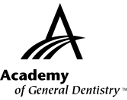|
Exercise No. 379
Subject Code: 070
Endodontics
The 15 questions for this exercise are based on the article The impact of endodontic irrigating solutions on the push-out shear bond strength of glass fiber posts luted with resin cements on pages 26-30. This exercise was developed by Riki Gottlieb, DMD, MS, FAGD, in association with the General Dentistry Self-Instruction committee.
|
Reading the article and successfully completing this exercise will enable you to:
- describe intracanal irrigation systems and various resin cement systems;
- understand the effect of each irrigation and cement system on bond strength of fiber posts to dentin; and
- evaluate the impact of different combinations of endodontic irrigation and cements on the adhesion process.
|

